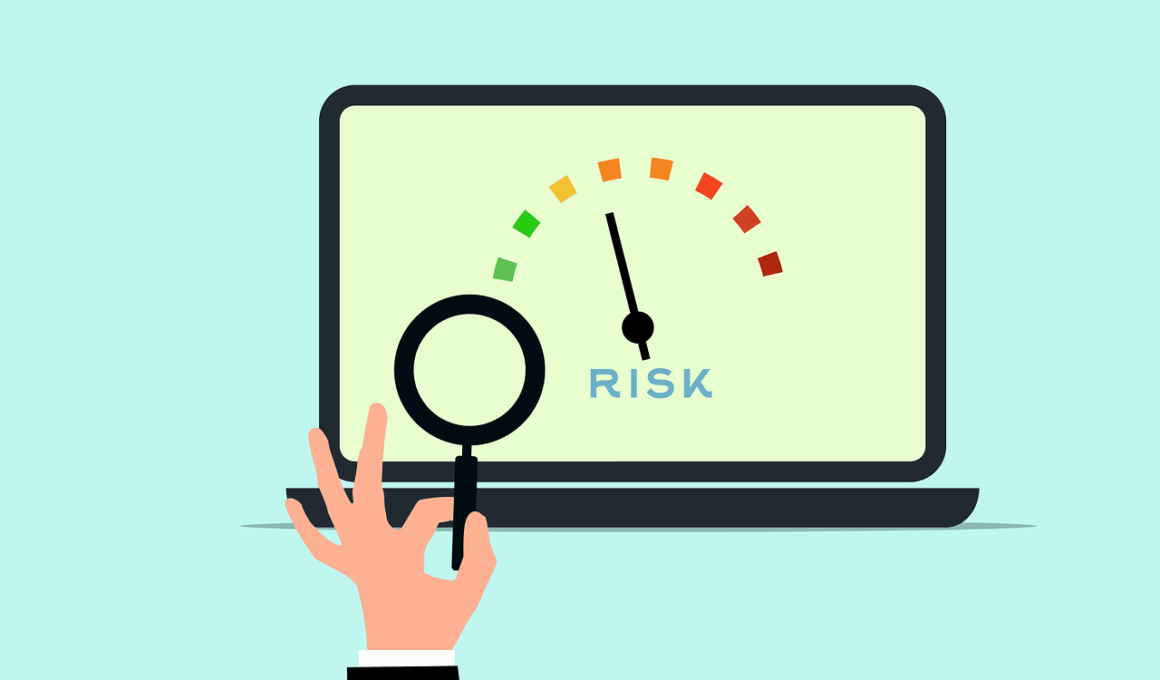Implementing Continuous Risk Monitoring Systems
In today’s fast-paced business environment, implementing continuous risk monitoring systems has become pivotal for organizations aiming to enhance risk optimization. These systems drive the proactive identification of risks, enabling timely responses that significantly reduce potential impacts. Leveraging analytics and technology, businesses can develop frameworks for real-time risk assessment, facilitating informed decision-making. By continuously capturing data, risk monitoring systems can alert stakeholders to irregularities and uncertainties in operations. Moreover, they aid in the alignment of risk management with organizational goals, ensuring that tactical and strategic objectives remain achievable. For implementation, organizations must invest in robust software solutions capable of automating data collection and analysis. Addressing data privacy and compliance is imperative, ensuring the organization adheres to regulatory standards while managing sensitive information. Involving cross-functional teams is also essential for successful integration. Creating a culture around risk awareness promotes collaboration across departments, reinforcing accountability in risk management practices. As a result, an organization’s overall resilience is enhanced through the adoption of continuous risk monitoring systems, ultimately positioning itself for sustainable growth within a volatile landscape.
Continuous risk monitoring plays a crucial role in enterprise risk management by providing a detailed view of potential vulnerabilities. These systems utilize advanced algorithms and machine learning techniques to analyze data streams for indications of risk. Regular monitoring can highlight emerging threats before they manifest into more significant issues, which might impact financial stability or reputation adversely. Importantly, integrating these systems requires careful planning and consideration of the organization’s specific risk landscape. Clear objectives must be established to direct the monitoring efforts meaningfully. Moreover, robust training for staff ensures that they are equipped to interpret data and respond appropriately to alerts effectively. Collaboration with IT professionals is also essential to ensure that the infrastructure supporting these systems is secure and scalable. By leveraging continuous monitoring, organizations can generate valuable insights that inform strategic planning and operational improvements. Not only does this approach strengthen compliance initiatives by addressing risks proactively, but it also fosters a resilient organizational culture. Continuous risk monitoring ensures that risk management becomes ingrained in the overall corporate strategy ensuring that organizations remain agile in the face of uncertainty.
The Benefits of Continuous Risk Monitoring
The implementation of continuous risk monitoring systems offers numerous benefits that contribute significantly to organizational effectiveness and stability. Firstly, these systems empower organizations to promptly detect anomalies, thus facilitating swift interventions to mitigate potential risks. This real-time monitoring becomes indispensable during unexpected events, allowing organizations to adapt quickly and maintain operational continuity. Secondly, these systems enhance compliance efforts, aligning risk management practices with regulatory requirements. By effectively integrating risk monitoring tools, organizations can streamline compliance processes, which reduces the likelihood of costly penalties. Additionally, employee accountability increases when integrated monitoring systems are in place, as team members can visualize their roles in risk management. Enhanced reporting capabilities allow organizations to create detailed risk profiles, which inform strategic decision-making. Continuous risk monitoring also fosters a proactive culture where risks are anticipated rather than merely reacted to. By embracing ongoing assessments and audits, organizations can continuously refine their risk management strategies, benefiting overall performance. Ultimately, the holistic approach provided by continuous risk monitoring systems positions organizations for greater resilience and adaptability in an unpredictable environment, ensuring sustainable success.
Implementing continuous risk monitoring systems involves several critical steps essential for success. Initially, organizations should conduct a comprehensive risk assessment to identify and prioritize potential risks. This step ensures that the monitoring system is tailored to address the unique vulnerabilities present within the organization. Following this, the selection of appropriate technology solutions is vital for effective system deployment, as it sets the foundation for real-time data analytics. Investing in user-friendly software ensures that all staff members can engage with the monitoring systems without overwhelming complexity. After deployment, regular training sessions must be conducted to enhance users’ understanding of the tools at their disposal. Clear documentation regarding procedures and protocols should be developed to guide employees through various monitoring scenarios. Furthermore, the organization’s leadership should establish a clear communication plan concerning risk findings and necessary actions. Continuous interaction between departments facilitates knowledge sharing and collaborative problem-solving. Continuous evaluation of the system’s effectiveness will allow organizations to refine and adapt their approaches to risk management, creating a dynamic environment that supports ongoing improvements. By following these steps, organizations can successfully integrate continuous risk monitoring into their overall risk management strategy.
Challenges in Continuous Risk Monitoring
While continuous risk monitoring systems offer numerous advantages, organizations encounter several challenges when implementing these systems effectively. One significant obstacle is data overload, wherein organizations may struggle to manage and interpret large volumes of data generated by monitoring systems. Without proper filtering capabilities and analytical tools, valuable insights may be overlooked. Additionally, there are concerns about data integrity and accuracy, as flawed data can lead to misguided actions that heighten risk exposure. Ensuring that data sources are reliable and regularly updated is crucial for effective monitoring. Another challenge lies in securing stakeholder buy-in, as employees might resist adopting new systems due to fears of increased workload or job displacement. Addressing these concerns through communication and effective change management practices is essential. Furthermore, protecting sensitive information became paramount, especially regarding compliance with regulations such as GDPR or HIPAA. Organizations must prioritize data security measures to maintain confidentiality and trust. Ultimately, recognizing and addressing these challenges allows organizations to foster a culture of continuous improvement and innovation regarding risk management, ensuring their monitoring systems’ long-term success.
Organizations can foster a culture of risk awareness among employees by implementing training and development programs. Providing insights into the importance of risk monitoring creates a shared understanding of its benefits across teams. Engaging employees through workshops and seminars enhances their ability to recognize risks within their domains effectively. Additionally, illustrating real-world examples of risk scenarios and their consequences can resonate with team members, encouraging proactive behavior. Including risk management objectives in performance evaluations can also motivate staff to prioritize risk concerns. Creating an open environment for discussing risks allows team members to voice concerns freely and contribute to collective solutions. Integrating risk communication into regular meetings emphasizes the need for ongoing vigilance and responsiveness in organizational operations. Leveraging collaborative technology platforms can facilitate information sharing, ensuring that everyone remains informed about potential risk developments. Encouraging mentorship programs can provide opportunities for experienced employees to guide newer team members in navigating risk assessments. Ultimately, cultivating a risk-aware organizational culture empowers employees to become influential advocates for risk management, driving improved outcomes and resilience throughout the business. Through continuous learning and adaptation, organizations can succeed amid uncertainty.
The Future of Continuous Risk Monitoring
As businesses continue to evolve, the future of continuous risk monitoring systems looks promising and dynamic. Advancements in technology, particularly artificial intelligence and machine learning, will further revolutionize how organizations approach risk management. By enabling smarter predictive analytics, these technologies can anticipate potential threats with remarkable accuracy. Continuous risk monitoring systems will increasingly integrate with enterprise resource planning systems, streamlining data flow and ensuring immediate risk visibility across the organization. Additionally, as businesses embrace remote work and digital transformations, adaptive monitoring mechanisms will emerge to provide coverage for diverse operational environments. Cloud-based solutions will allow for seamless accessibility and real-time collaboration across geographies, facilitating efficient risk assessments anytime, anywhere. Moreover, organizations are likely to invest more in developing robust risk governance frameworks that outline the roles and responsibilities associated with monitoring efforts. This commitment promotes accountability and ensures that risk management remains a business priority. By aligning risk strategies with emerging trends, organizations can enhance their competitiveness and secure their futures. Ultimately, the continued evolution of risk monitoring will be characterized by innovation, resilience, and a greater emphasis on strategic alignment.
In conclusion, implementing continuous risk monitoring systems represents a pivotal step for organizations striving to achieve robust risk optimization. By embracing these systems, businesses can proactively manage vulnerabilities and leverage insights that drive informed decision-making. The benefits include improved compliance, enhanced stakeholder collaboration, and the cultivation of a proactive risk culture. While challenges exist in terms of data management and securing stakeholder buy-in, strategic approaches can surmount these obstacles effectively. Organizations that prioritize risk monitoring with a forward-thinking approach will not only safeguard their interests but also position themselves for sustainable growth in an unpredictable landscape. This journey involves a commitment to ongoing learning, adaptation, and enhancement of risk management practices. By fostering an engaged and informed workforce, organizations can create a unified front against potential risks. The insights gained through continuous risk monitoring can inform innovation and strategic planning. As the landscape continues to change, staying ahead of evolving risks becomes imperative for both existing and new organizations. Therefore, investing in continuous risk monitoring should be regarded as a critical strategy that underpins long-term success and resilience in the face of uncertainty.


